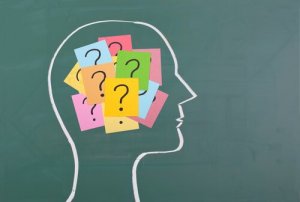What is Cognitive Restructuring?

What would happen if your partner left you? You’d probably feel terrible. However, would it really be that bad? How many other horrible things are happening in the world? How many of them are worse than breaking up with your partner or failing a test? You may wonder where all these questions are coming from. Well, they come from cognitive restructuring.
Cognitive restructuring is a technique that focuses on our thoughts. Through it, people learn to replace harmful thoughts with others that aren’t so maladaptive. Thus, cognitive restructuring is one of the most suggestive cognitive-behavioral techniques within a psychologist’s repertoire. If we change certain thoughts, we’ll change the emotions associated with them, which can lead to well-being.

A thought is a hypothesis
Cognitive restructuring consists of making the patient identify and question their maladaptive thoughts. As a result, they’ll replace them with more appropriate ones to reduce or eliminate the emotional distress that the former ones caused.
In cognitive restructuring, thoughts are considered hypotheses. The therapist and the patient work together to collect data that determines whether those hypotheses are correct or useful. Instead of telling the patient some valid alternative thoughts, the therapist asks a series of questions so they can design behavioral experiments that the patient evaluates and uses to test out their negative thoughts.
Finally, patients come to a conclusion about the validity or usefulness of said thoughts. As you can see, the therapist doesn’t impose anything. The patient draws conclusions from the experiments.
Theoretical foundations of cognitive restructuring
Cognitive restructuring is based on the following theoretical assumptions:
- The way in which people cognitively structure their experiences exerts a fundamental influence on how they feel and act, as well as on the physical reactions they have. In other words, our reaction to a given event depends mainly on the way we perceive it, value it, and interpret it.
Imagine you have a date with a person you barely know. You’ve been waiting for half an hour and they’re still a no-show. If your interpretation is that they’re not interested in you, you’re going to feel sad and won’t contact them ever again.
However, if you think that the reason why they’re running late is a setback or time confusion, your emotional and behavioral reaction will be a lot different. On the other hand, affection, behavior, and physical reactions influence each other and contribute to maintaining thoughts.
- You can identify people’s thoughts through methods such as interviews, questionnaires, and self-records. Many of these thoughts are conscious while others are preconscious. However, the person has access to them.
- Modifying people’s thoughts is possible. In fact, it’s used to achieve therapeutic changes.

The ABC model of cognitive restructuring
Cognitive restructuring is based on a model that many authors (for example, Ellis, 1979) call the ABC model.
In this model, the letter A refers to an activating situation, event, or experience. For example, being judged by a person we love or failing a test.
The letter B represents the patient’s appropriate or inappropriate cognition (thoughts) about the situation (A). Cognition also refers to cognitive processes. Among them, we find perception, attention, memory, reasoning, and interpretation.
A person’s assumptions and beliefs cause information processing errors. Among these errors or biases, we find overgeneralization, filtering, dichotomous thinking, and catastrophizing, among others.
Finally, the letter C refers to the emotional, behavioral, and physical consequences of B (cognitions). For example, being scared and running away when a barking dog approaches us.
Emotions, behavior, and physical reactions influence each other and help maintain cognition. In the ABC model, cognitions always precede emotion. However, emotion can exist for a few moments without previous cognitions.
A basic cognitive restructuring assumption is that cognitions play an important role in explaining human behavior and emotional disturbances.
As you can see, according to cognitive restructuring, events per se aren’t responsible for our emotional and behavioral reactions. Thus, our expectations and interpretations of these events, plus the beliefs related to them, are responsible for how we feel and act.
All cited sources were thoroughly reviewed by our team to ensure their quality, reliability, currency, and validity. The bibliography of this article was considered reliable and of academic or scientific accuracy.
- Leahy, R. L., & Rego, S. A. (2012). Cognitive Restructuring. In Cognitive Behavior Therapy: Core Principles for Practice. https://doi.org/10.1002/9781118470886.ch6
- Shikatani, B., Antony, M. M., Kuo, J. R., & Cassin, S. E. (2014). The impact of cognitive restructuring and mindfulness strategies on postevent processing and affect in social anxiety disorder. Journal of Anxiety Disorders. https://doi.org/10.1016/j.janxdis.2014.05.012
- Johnco, C., Wuthrich, V. M., & Rapee, R. M. (2014). The influence of cognitive flexibility on treatment outcome and cognitive restructuring skill acquisition during cognitive behavioural treatment for anxiety and depression in older adults: Results of a pilot study. Behaviour Research and Therapy. https://doi.org/10.1016/j.brat.2014.04.005
- Marks, I., Lovell, K., Noshirvani, H., Livanou, M., & Thrasher, S. (1998). Treatment of posttraumatic stress disorder by exposure and/or cognitive restructuring: A Controlled Study. Archives of General Psychiatry. https://doi.org/10.1001/archpsyc.55.4.317
This text is provided for informational purposes only and does not replace consultation with a professional. If in doubt, consult your specialist.








